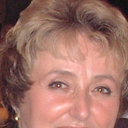Plant polyphenols against UV-C-induced cellular death.
Հիմնաբառեր
Վերացական
The glycosylated phenylpropanoid verbascoside isolated from cultured cells of the medicinal plant Syringa vulgaris (Oleaceae) has previously been characterized as an effective scavenger of biologically active free radicals such as hydroxyl, superoxide, and nitric oxide, as a chelator of redox active transition metal ions (Fe (2+), Fe (3+), Cu (2+), and Ni (2+)), and an inhibitor of lipid peroxidation. In the present work, we have compared the cytoprotective effects of the biotechnologically produced verbascoside with two commercially available polyphenols (the glycosylated flavonoid rutin and its aglycone quercetin) against free radical-mediated UVC-induced cellular death in cultures of human keratinocytes (HaCaT) and breast cancer cells (MCF 7). We have shown that all the polyphenols studied afforded effective protection against UVC-induced necrosis and did not prevent UVC-induced apoptosis in both normal and tumor cell lines. The cytoprotection did not correlate either with UVC absorbance by polyphenols or with their superoxide radical scavenging properties. However, UVC protection strongly depended on the lipid peroxidation inhibiting and Fe (2+) chelating properties of polyphenols. We suggest that these plant polyphenols could be feasible for a photoprotection of human skin.


